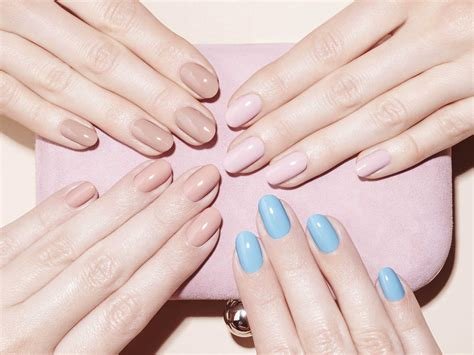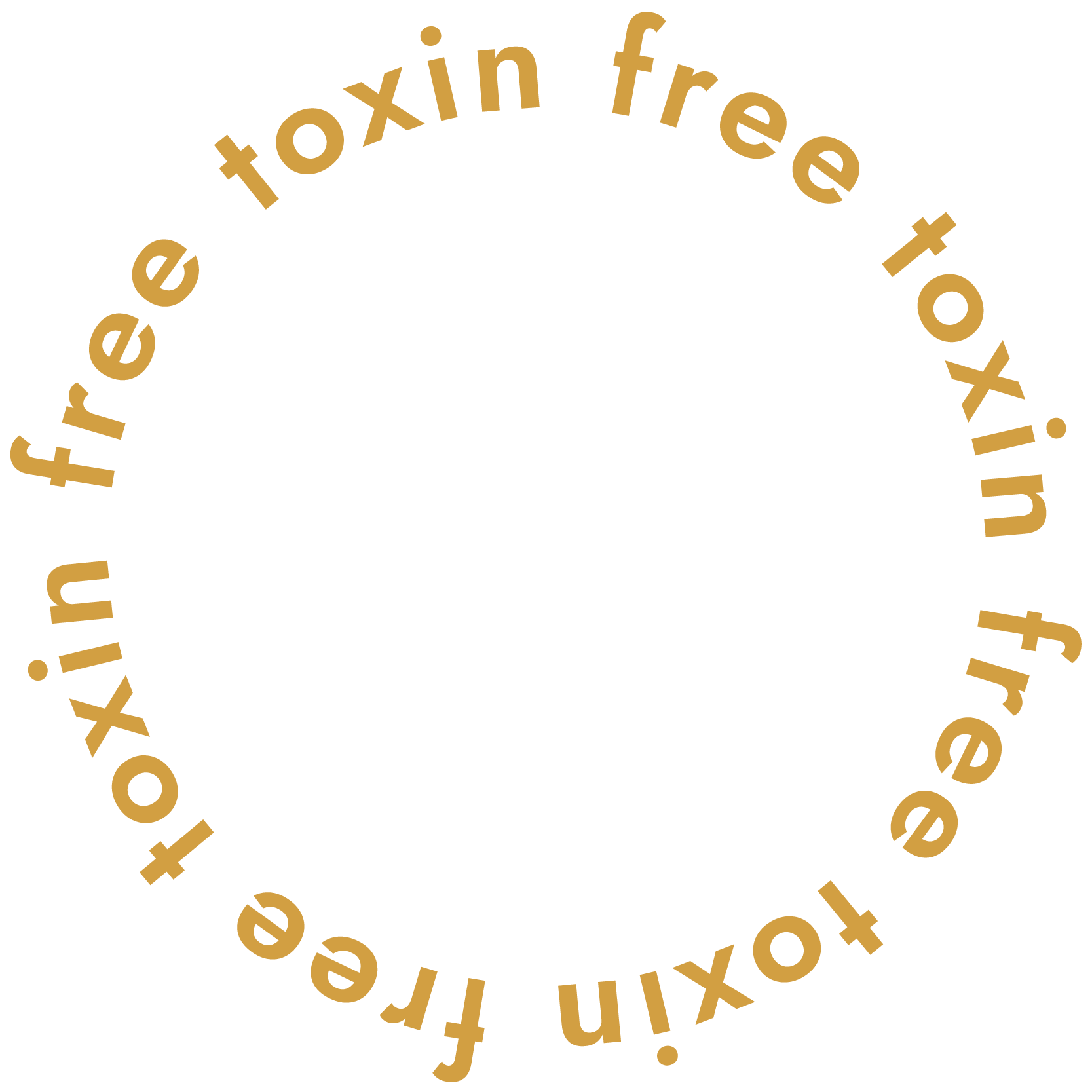Weekly mani-pedis are a beloved routine for so many women. That’s probably why toxin-free nail polish is the most requested addition to my Toxin-Free Shopping Guide. While I pretty much always have clear, untouched nails, my daughter loves a manicure. So you can thank her for her contribution to the shopping guide’s newest category: Nail Polish.
Unfortunately, a completely 100% toxin-free nail polish does not exist, and it probably never will. Why? Because nail polish is paint. Paint requires ingredients with structure, like polymers, to make them function properly. Right now, synthetic dyes are still the ingredient with staying power.
So, while I’m never going to parade these products as 100% safe, what I can share with you are safer alternatives. Because here’s the thing – I’m never going to judge anyone for conscious consumption. If getting your nails done brings you joy, you should keep getting your nails done. But hopefully, by the end of this episode, you’ll feel empowered to continue that tradition without worrying too much about adverse health effects.
In This Episode, You’ll Learn:
-
Why no nail polish is 100% toxin-free
-
Specific ingredients to avoid, like Benzophenone-1
-
The dangers of the UV lamps used in gel mani/pedis
-
My recommendations for safer alternatives
Concerning Ingredients in Nail Polish
Let’s talk about what ingredients in nail polish are the most concerning. The toxic ingredients are used for a reason. It’s to make them shiny, shimmery, long-lasting, and avoid streaks. You’ll have to decide how many toxins you want to be removed from the nail polish you’re using and how important that is against how well you want it to work. Then, you need to find the sweet spot that is comfortable for you. Do what’s best for you and make your own risk analysis. All I did was review the ingredients and review the product, and I’m going to let you know how well they worked.
History of Toxic Nail Polish
Anyway, let’s talk about things you need to know to be an educated consumer. So let’s back up to the 1990s. In the ’90s and early 2000s, manufacturers started promoting what they called 3 free nail polish formulas. That ‘3’ stands for three specific ingredients that people started to realize were toxic. Just like any other cosmetic, there’s no regulation. Companies are self-regulating themselves. Until the public gets pissed off about something, the news picks up on something, or there’s a medical article about something, nothing’s going to change. Companies started changing their products because there was this public outcry about how toxic they were.
Top 3 Toxic Ingredients in Nail Polish
Formaldehyde was the big one. Formaldehyde is a human carcinogen. It is a cancer-causing ingredient, and it was the thing that kind of blew up in the media that made people concerned about nail polish.
Toluene was the second one. Even at very low levels, it is highly genotoxic. It causes DNA damage and mutation in your cells. DNA damage leads to cancer.
The third one is a bad phthalate. Phthalates are a class of chemicals and a class of plasticizers. Some are worse than others, but dibutyl phthalate is the worst of them all. It is a well-known reproductive and developmental toxicant, which means it can lead to infertility, hormone disruption, and reproductive issues. It can also lead to developmental issues in babies.
Removing these three ingredients kind of became the three free we see now, but there’s no regulation on this. Nail polish companies came together, and it’s just been this understanding that 3-free means these ingredients are missing. When I reviewed a lot of these nail polishes, the 3-free, 5-free, and 10-free were pretty much the same free-from ingredients. But when you started getting up into the 13, 16, and 21, there were some slight variations. Each company can define what their number free means to them. There’s nothing set in stone. As consumers got more conscious of toxins over time, you started seeing these 5-free and 10-free more often. They started taking out and removing ingredients like TPHP, acetone, xylene, and parabens. Even mainstream toxic beauty brands like Maybelline, Chanel, and Revlon don’t have those three ingredients. Three free has become the baseline.
Gel Manicures and UV light
I want to talk for a second about gel manicures and the use of UV light. This garnered some news attention because there had been some anecdotal evidence from dermatologists claiming people who had gel manicures using UV lights were getting rare cancers on their fingers.
Researchers from UC San Diego and Pittsburgh conducted a research study to find out what happens to our cells under UV lights with chemicals on our fingernails. They tested both human cells and cells from mice. What they found was a single 20-minute session under the UV lights resulted in a 20-30% cell death. Three consecutive sessions caused 65-70% of the exposed cells to die. This UV exposure caused mitochondrial and DNA damage. What do we know about damaged DNA? It leads to cancer.
One of the notes in this study from the researchers was that the UV devices they were using in this study were less potent than the ones used in nail salons now. They’re not saying they saw the death of these cells and that person specifically got cancer. In fact, they talk about how it would be unethical to put people through this similar kind of research to find that out. They’re going to have to get people who use gel nail polish all the time and follow them for years and figure out the actual cancer rate. But we do know it damages our DNA. We also already have studies that show damaged DNA leads to cancer. In my mind, if you’re somebody who wants to reduce the amount of toxins and your risk of cancer in the future, switch to regular nail polish.
Regular Nail Polish
For regular nail polish, there is one ingredient that I want to point out that is garnering more attention. In some of the 5-free and 10-free polishes, I found this ingredient, but none of the nail polishes I have on my shopping guide are going to have this ingredient.
It’s a benzophenone, and it’s either going to have a ‘1’ after it (BP-1) or a ‘3’ (BP3). It’s used in nail polish as a UV absorber in cosmetic products including nail polishes. It’s found to have estrogenic activity. It is a hormone disruptor, but it’s a really bad one, similar to what you would find in BPA.
Safe(ish) Nail Polishes
The safer nail polishes are the ones that are water-based nail polish, which means they use water as a solvent when making their polish, and they use plant-based resins over synthetics. The water-based category is by far the cleanest. I was actually surprised when I found ten good brands that have water-based nail polish to choose from.
One of the things about water-based nail polish is that most of them use mica. There isn’t a toxicity problem with it, but mica is one of those ingredients that has a huge child labor and forced labor problem. I am staunchly against any company that purchases and uses mica in their ingredients that doesn’t certify that it’s coming from an ethical source.
Unfortunately, four of the water-based companies would not certify to me that their mica was ethically sourced. I had one company tell me they’re under no obligation and have no way to enforce that against their suppliers, which is total bullshit. You should know where your ingredients are coming from. If you’re purchasing mica and you don’t know if it’s coming from child labor, you’re not going to get a spot on my toxin-free shopping guide. Don’t worry – I left those companies out.
There are some pros and cons to water-based nail polishes.
Pros:
-
You don’t have to use harsh chemicals to take it off.
-
It tends to dry a lot faster than anything that’s oil or solvent-based.
Cons:
-
It comes off and chips quickly.
-
You have to put on multiple thin coats after they’ve dried.
Top Water-Based Nail Polish Brands
Kapa Nui Nails is a Hawaiian company, and their colors are absolutely beautiful. When it came to all the water-based options I tested, their polishes performed the best. Honeybee Gardens is in second place; they have a bigger variety with 26 colors. They also sell primers, sealers, and a fantastic acetone remover gel.
P.S. These water-based options are better, but they’re still using synthetic dyes. No nail polish is going to be 100% toxin-free, but these are by far the cleanest.
If you want to see the rest of the brands that made the list, you can go to the shopping guide.
21-Free Nail Polishes
The next safest category is the companies that self-proclaim to be 21-free. These aren’t water-based, but they’re not solvent-based either. A lot of them have some good oils in them. I can tell that other than removing those 21 ingredients, companies are now trying to add good-for-you oils. But you’re still going to see those synthetic copolymers and the things that are going to keep the color on your nail bed here. You’re not going to see water-based options, but these are the next best thing.
When I was choosing a 21-free that I felt had the best ingredients, I was also looking for a lack of fragrance. Fragrance, as you know, can be thousands of different ingredients. That one word can possibly carry a lot of chemicals with it that aren’t being disclosed to you. I tried hard to find companies that had this 21-free formulation but specifically looked to avoid fragrance.
I hope you found this helpful. I would love to know if you try any of the nail polishes in my toxin-free shopping guide. Thank you for being here, and as always, I hope your life is getting just a little less toxic.
Products Mentioned in This Episode:
-
BKIND
-
Cote. (a few shades do have Benzophenone-1, so read the label)
-
Kapa Nui
-
Dry Dazzle (a cleaner gel salon option)
Related Episodes
Episode 23: Why Did I Get Cancer?
Episode 45: Understanding Fragrance Allergens and Reading Labels (Cracking the Fragrance Code Part 2)
IF YOU ENJOYED THIS WEEK’S EPISODE, PLEASE:
- Leave a positive review or rating wherever you listen
- Shop toxin-free products on my Toxin Free Shopping Guide
- Download your free Tossing the Toxins Guide
- Post a screenshot, what you loved, and tag me on Instagram @wendy_toxinfreeish
- Want to ask me a question to get answered on the podcast? Leave me a voice message here.



+ show Comments
- Hide Comments